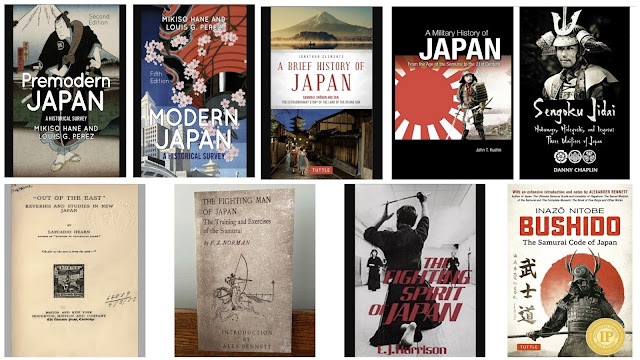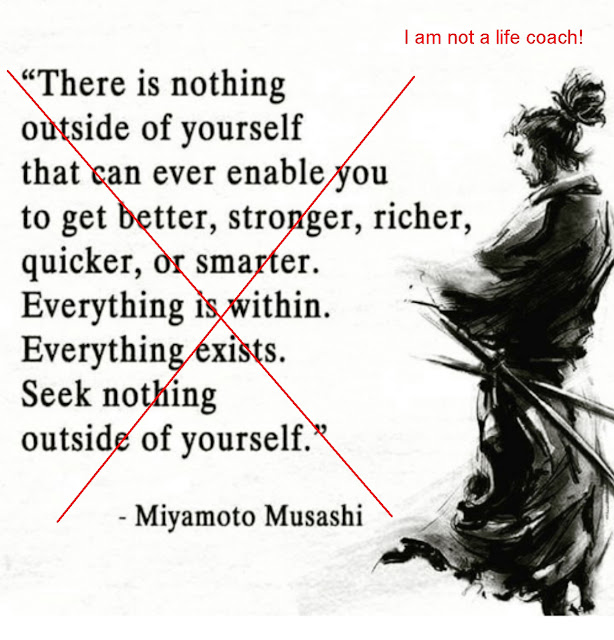February 2021 Book Survey: Japanese History Texts
 |
My reading theme for February 2021 was Japanese history texts. These are a few thoughts on the titles I (Richard) read. There are many others, but these are the group I chose to read in February 2021.
Introduction
Premodern Japan 2nd Edition and Modern Japan 5th Edition by Mikiso Hane and Louis G. Perez, 2014 and 2012
 |
| Premodern Japan 2nd Ed, Mikiso Hane and Louis G. Perez, 2014 |
 |
| Modern Japan 5th Ed, Mikiso Hane and Louis G. Perez, 2012 |
I present Premodern Japan and Modern Japan together as you could consider them volumes 1 and 2 of a general history of Japan. The authors each earned PhDs. While I could not determine the field for the late Dr. Hane (who passed away in 2003), I read that Dr. Perez studied modern Japanese history.
The authors prepared these texts as survey works for undergraduate students and the general reader. They were a joy to read. The prose is so well-written, clear, concise, and comprehensive. It covers everything I would expect at a level that is appropriate. It does not get bogged down in details, some of the later titles do. The notes provide options for additional study. If you choose to read both, you can likely skip chapters 1-4 of the second book. They basically summarize the content in the first volume, which is helpful if one is only interested in modern Japanese history.
The main caution I would apply to these books concerns some of the topics covered. Martial History Team readers may not be interested in details on agriculture, trade, labor, or politics. I admit that I skimmed some of this material.
A Brief History of Japan by Jonathan Clements, 2017
 |
| A Brief History of Japan, Jonathan Clements, 2017 |
Dr. Clements is a member of Martial History Team, but I try to remain objective when reviewing his books. His work A Brief History of the Martial Arts appeared in a previous post. His 2017 book A Brief History of Japan is just as good as that title. Dr. Clements has a knack for selecting the right material to share with a reader, and he conveys it in a way that is personal and insightful. This book has less detail than the volumes by Hane and Perez, but in some ways it is more interpretative. I learned more about the how and why of certain events, which compensated for covering less material.
If I had to pick a single book to read about Japanese history, it would be Dr. Clements' title. However, I thought this book worked well with the previous two.
A Military History of Japan by John T. Kuehn, 2014
 |
| A Military History of Japan, John T, Kuehn, 2014 |
Dr. Kuehn serves as the Fleet Admiral Ernest J. King Professor of Maritime History for the Hattendorf Historical Center at the U.S. Naval War College. He retired from the U.S. Navy in 2004, serving 23 years as a naval flight officer. His book A Military History of Japan will appeal to MHT readers who like general Japanese history, but want to read more about the military aspects.
While the previous titles in the post discussed military matters, Dr. Kuehn's book concentrates on the military and strategic relationships among Japan, Russia, China, and Korea. The United States and Great Britain appear later on the scene, of course, but I learned a lot about Japan's strategic choices over the centuries due to the geography and politics of these four countries.
This book did not read as smoothly as the previous titles. For example, it was awkward to read sentences that started with "Too," and the like. However, the narrative and detail easily compensate for any problems I had with the prose. One aspect of this book that I enjoyed as a person with a degree in military and European history was the comparison to leaders and battles from that continent.
If you want to get a high-level view of Japanese military history, albeit perhaps with less criticism of early history sources, this is the book for you.
Sengoku Jidai. Nobunaga, Hideyoshi, and Ieyasu: Three Unifiers of Japan, by Danny Chaplin, 2018
 |
| Sengoku Jidai. Nobunaga, Hideyoshi, and Ieyasu: Three Unifiers of Japan, Danny Chaplin, 2018 |
According to his web site, Mr. Chaplin holds an undergraduate degree in philosophy from the University of York. I had high hopes for Sengoku Jidai, but ultimately found this book too difficult to recommend to all but the most dedicated and detail-starved readers.
This book lacked an historical narrative to guide the reader from one event to another. Instead of being carried throughout history, I felt dragged from one castle siege to another. This book certainly felt like it showed the reader way too many "trees" without explaining the "forest." Some other reviewers also posted concerns over historical details, but as a newcomer to the field I am not in a position to definitively comment.
Out of the East, by Lafcadio Hearn, 1895
 |
| Out of the East, Lafcadio Hearn, 1895 |
Scholars remember Lafcadio Hearn (1850-1904) as one of the first English commentators on life in Japan. His 1895 book Out of the East is significant as it is one of the first mentions of "jiujutsu" in English. Mr. Hearn devotes a chapter to the subject, saying the following:
"Here I must premise that I know practically nothing of jiujutsu. One must begin to study it in early youth, and must continue the study a very long time in order to learn it even tolerably well. To become an expert requires seven years of constant practice, even presupposing natural aptitudes of an uncommon order. I can give no detailed account of jiujutsu, but merely venture some general remarks about its principle...Mr. Kano [Jigoro, founder of Judo] contributed some years ago to the Transactions of the Asiatic Society a very interesting paper on the history of Jiujutsu."
Mr. Hearn seems to have based his chapter and understanding of what was probably judo on the contents of this paper, titled Jiujutsu (柔術) The Old Samurai Art of Fighting Without Weapons (1888-1889). He then applies this idea of jiujitsu to Japan's relations with itself and the outside world.
I would recommend reading this text if your primary interest is Japanese culture at the end of the 19th century.
The Fighting Man of Japan by FJ Norman, introduction by Alexander Bennett, 2nd Ed, 1905/2013
 |
The Fighting Man of Japan, FJ Norman, introduction by Alexander Bennett, 2nd Ed, 1905/2013 |
As to the content of the book, it contains material on Japanese military training of the day, such as that undertaken by soldiers and sailors in the Japanese army and navy. It also briefly describes aspects of kendo and jujutsu and judo.
Of historical note is the mention of "A Ju-Jitsu book" and "The Japanese School of Ju-Jitsu" at "305 Oxford W," shown below:
 |
| Page from original text of The Fighting Man of Japan mentioning The Japanese School of Ju-Jitsu |
 |
| Page from original text of The Fighting Man of Japan mentioning A Ju-Jitsu Book |
The book is question is no doubt The Game of Ju-Jitsu by Taro Miyake and Yukio Tani, published in 1906.
The Fighting Spirit of Japan by EJ Harrison, 1913/1955
 |
| The Fighting Spirit of Japan, EJ Harrison, 1913/1955 |
The Fighting Spirit of Japan by judoka and journalist EJ Harrison (1873-1961) is an interesting title. The author originally published one edition in 1913, prior to the Greater Asian War, and then published a second edition in 1955, after the conclusion of that war (which included World War II). Most available editions (such as the one linked) are the 1955 version. A cursory comparison of the tables of contents shows that the 1955 edition removed the 1913 chapters XVIII "The Japanese Thespian Up to Date" and XIV "Some Superstitions and Occult Practices." The 1955 edition added chapters VII "Karate and Aikido," VIII "Post War Expansion of Judo," XX "The Nightless City," and XXI "Postscript."
Of interest to judo and Brazilian jiu-jitsu practitioners in the author's mention of Maeda Mitsuyo in the first edition, but not the second:
 |
| The Fighting Spirit of Japan, p 76, 1913 |
 |
| Mr. "Mayeda," "Fourth Grade in Judo," The Fighting Spirit of Japan, 1913 |
This material did not appear in the 1955 edition, but it indicates to me that Mr. Maeda was famous in the judo community even before he went to Brazil in 1914 and met the Gracie family.
Another difference I noted was the use of "Mr. Kano" in the 1913 version and "Dr. Kano" in the 1955 text. As we know from a previous post, professor Kano did not earn a PhD or an equivalent which would have resulted in calling him "Dr. Kano."
This was an interesting book, but I must admit I expected a bit more grounding from an author who was a high ranking judoka. Mr. Harrison was clearly a fan of "esotericism" and occult topics, and wrote about the power of "kiai" and "aiki" to shout at birds, drop them from a tree, and then revive them. He claimed to not have any knowledge of karate and aikido, yet felt it was important to talk about their supposedly deadly nature, e.g. "a single karate technique" is "capable of inflicting fatal injury." While that is possible, the sensationalist attitude is surprising. The author is clearly a product of his times, with some racial overtones, early 20th century mysticism and "voodoo-isms," and praise for now-debunked (PDF) material in books like Zen in the Art of Archery.
Still, this book is worth a read if you want to listen to stories of early judoka dropping attacker after attacker in restaurants, or other settings. It reminded me that Brazil didn't hold a monopoly on bad behavior by early practitioners. The difference seemed to be that professor Kano and the Kodokan "excommunicated" early judo thugs, whereas in Brazil they were released from prison thanks to corrupt government officials.
Bushido: The Samurai Code of Japan: With an Extensive Introduction and Notes by Inazo Nitobe and Alexander Bennett, 2019
 |
| Bushido, Inazo Nitobe and Alexander Bennett, 2019 |
I will admit that I was not a fan of the original version of this book, which I read as a straight reproduction of the original 1900 book. Dr. Bennett's edition, however changed that. While I still think of bushido as an invented tradition, once again the introduction, biography, and notes added by Dr. Bennett made me respect the work of Dr. Nitobe (1862-1933).
The introductory material, and Dr. Bennett's book Bushido Explained, are essential reading for anyone who wants to ground their understanding of bushido in reality.
Conclusion
I don't necessarily have a "must read" book from this list, as your interests will determine which book appeals to you. If you're looking for a single title to start a journey with Japanese history, however, I recommend Dr. Clements' book A Brief History of Japan.
In March I believe I will be reading books on the samurai class.
If you like this article, check out our Facebook page, Instagram account, Twitter feed, and Amazon Wish List. Be devoted!



Comments
Post a Comment